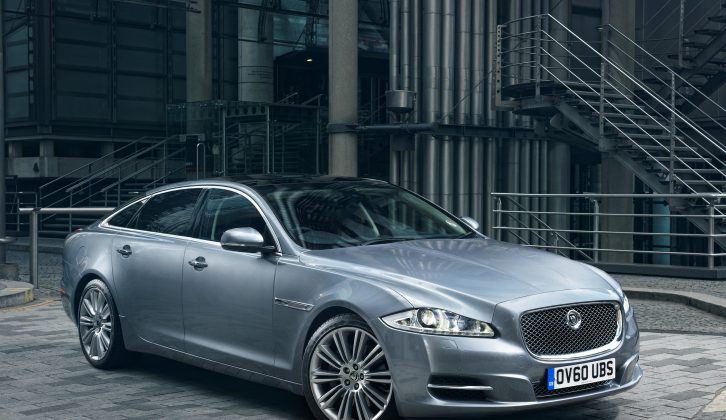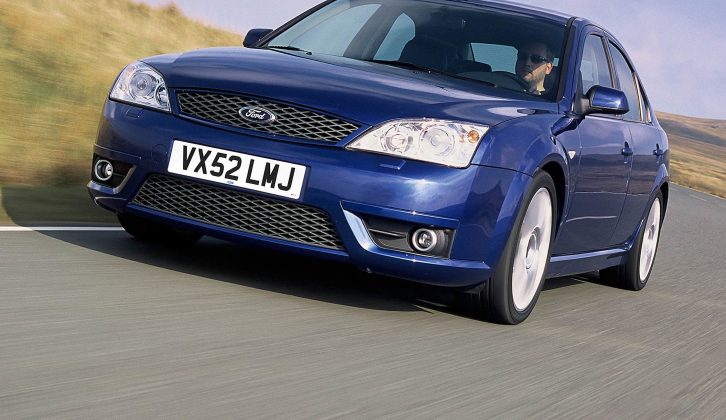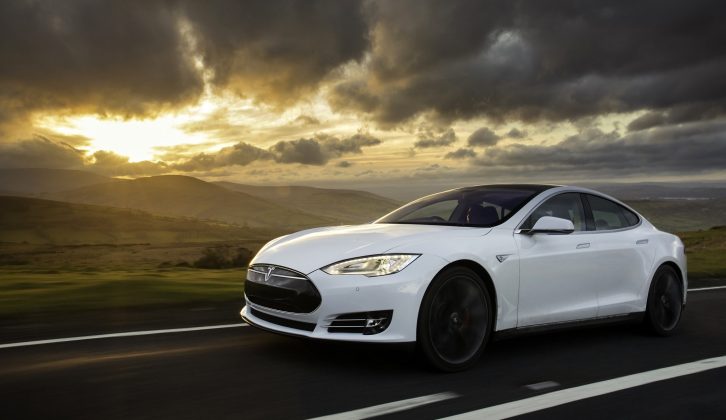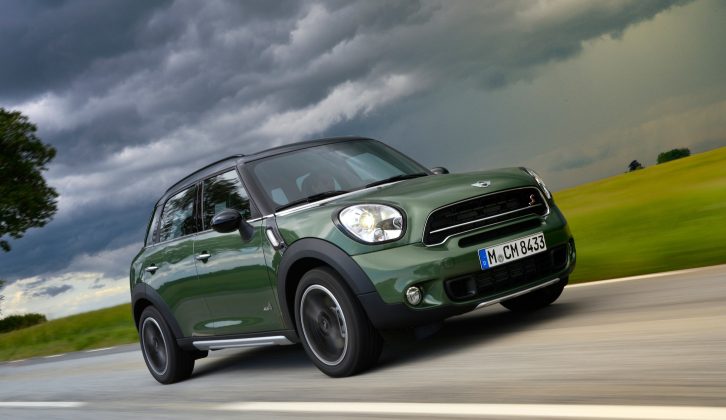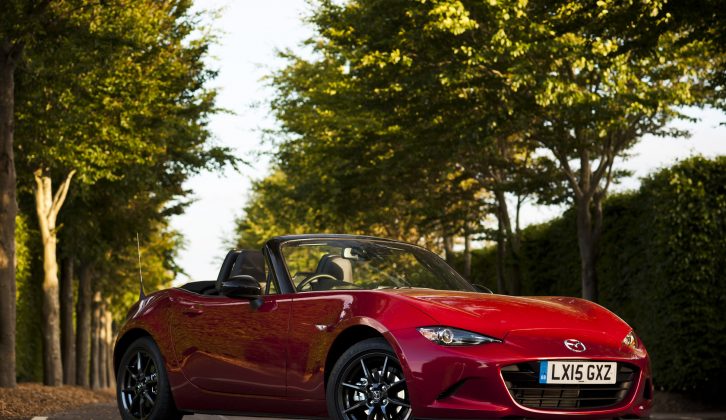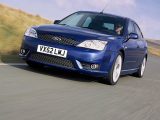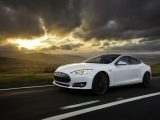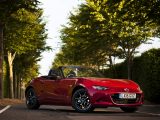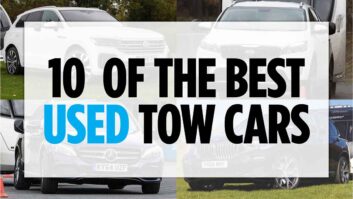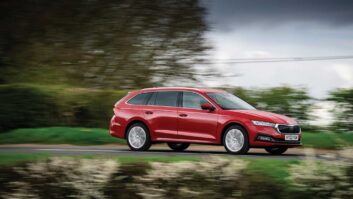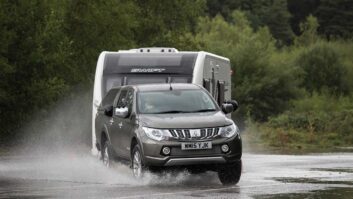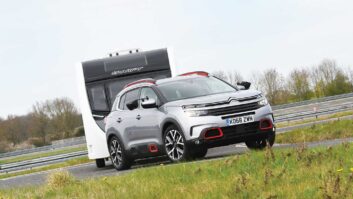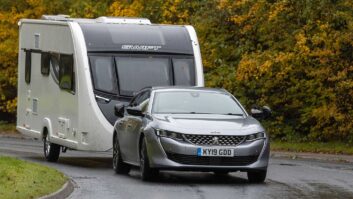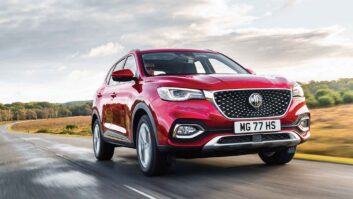Most cars can tow. They may or may not be any good at it, but at least the manufacturer has gone to the trouble of establishing a legal towing limit as part of the homologation process every new model goes through before it can be sold.
Sometimes, though, a manufacturer thinks better of it. It could be there’s a technical reason a car can’t tow. Or maybe towing with some models seems like such a left-field idea the car maker doesn’t see the point. And if you’re deciding what tow car to buy next, be sure to check that it has been homologated for towing.
Here are five cars we’d love to tow with, but can’t.
Jaguar XJ
The old-shape Jaguar XJ isn’t an obvious tow car. In fact, it’s very rare that you see a luxury saloon towing anything.
I can remember the surprise most judges felt when towing with the old XJ at the Tow Car Awards in 2008. Here was a car that caused a few raised eyebrows when it arrived for the tests, and which one or two of us probably thought was there to make up the numbers.
It wasn’t. It was downright brilliant, superbly stable at speed and effortlessly quick. The XJ won its weight class with ease.
So when the new XJ arrived a couple of years later, I couldn’t wait to tow with it. Only like a kid arriving at the toy shop just as the shopkeeper rolls down the shutters, I was disappointed. I’ve never towed with the current-shape XJ and I never will.
Today’s Jaguar XJ isn’t approved for towing, despite the current diesel version weighing upwards of 1800kg and having 516lb ft of torque. I bet it could have made a fantastic tow car.
Ford Mondeo ST220
The second-generation Ford Mondeo was – and is – a cracking car. If you can find one that’s been well looked after you’ll be the proud owner of a bargain tow car.
Unless, that is, you go for the ST220. The high-performance flagship of the Mondeo range, the ST was powered by a 3.0 V6 petrol engine with more than enough power and torque to pull any well-matched caravan up to speed, and probably a badly-matched one, too. These days you should be able to find a late ST220 in great condition for under £5000.
Should you buy one? If you want a cut-price, high-performance family car, then yes. But if you want to tow a caravan with an ST220, I’m afraid there’s bad news. Ford never homologated the ST220 for towing. From memory the exhaust-routing is Ford’s official reason, but some internet conspiracy theorists are convinced Ford just didn’t want to see its flagship performance saloon towing a caravan.
You can, however, tow with the diesel ST. But without a caravan on the back it won’t be as much fun as the ST220.
Tesla Model S
I can’t think of a single pure-electric road car that’s approved for towing. Most manufacturers cite twin concerns about overheating and limited range as why electric vehicles aren’t suited to towing. Even if you were allowed to tow with most electric cars, you’d need to stop for a recharge so often that by the time you reached the campsite you’d have to come straight home again.
Of all the electric cars I’ve driven, the one I’d most like to tow with is the Tesla Model S. It has a much better range than most electric vehicles (it will travel up to 330 miles between charges in ideal conditions). It also recharges much quicker than most electric cars, so long as you have access to one of Tesla’s ‘Superchargers’. Plug in for half an hour for enough juice for 170 miles of driving.
There are all sorts of reasons why the Tesla might make a surprisingly good tow car. Weight is one. All those batteries aren’t light, so the Tesla tips the scales at over 2.1 tonnes. Most of that weight is carried low down and between the two axles, which should make the Tesla Model S a stable tow car.
It ought to make a very quick one, too. Electric motors produce enormous torque, even from standstill, giving sports saloon performance. Four-wheel-drive versions of the Tesla should be surefooted in all weathers.
Realistically, we’re a generation or two away from seeing a pure-electric tow car, both in terms of the in-car technology and the charging infrastructure. If anything, the infrastructure could prove the greater problem. Fancy unhooking your caravan at the motorway services and driving around to the charging area to top up the car’s batteries? Thought not.
But if and when the all-electric tow car becomes a reality, I hope it’s as good to drive as the Tesla Model S.
Mini Countryman
The Countryman is the pint-sized crossover of Mini’s range. Available with four-wheel drive and a torquey diesel engine, it looks like an ideal small tow car for someone with a fashionable small tourer like a T@B. Only it can’t tow. At all.
Mini hasn’t even given the Countryman a derisory towing limit. The car simply isn’t homologated for towing.
There may be a technical reason, but I do wonder if Mini’s image police have decided they don’t want their trendy family crossover pulling a tourer. Perhaps someone needs to explain that caravanning isn’t the anti-fashion no-go area they seem to think it is.
Mazda MX-5 Mk2/Mk3/Mk4
Now, you might not expect a two-seat roadster to be able to tow anything, but the Mazda MX-5 Mk1 was homologated for towing. I doubt too many owners did any towing with their MX-5, but the option was there.
The Mk2, Mk3 and the new Mk4 aren’t approved for towing, though. And I’d be surprised if more than a tiny handful of owners would care.
Me? I care. I’d like to tow a micro-caravan or a trailer tent behind my Mk3, or better still the superb new Mk4.
You’d be crazy to want to pull anything big behind the MX-5, but there’s enough power and torque to cope with an Eriba Puck, a Going Cockpit S or a T@B, surely? The new Mk4 is a light car, but even with a kerbweight hovering close to a tonne an 850kg caravan would be within the 85% matching guideline.
The fact that Mazda hasn’t homologated the MX-5 for towing doesn’t make me want one any less, though…
Four-wheel-drive versions of the Tesla should be surefooted in all weathers
